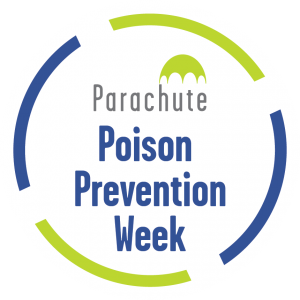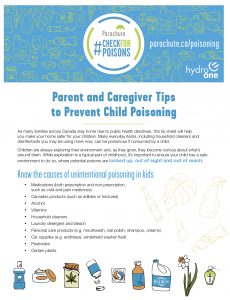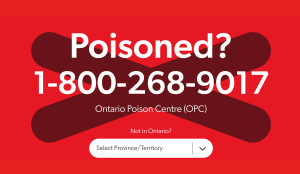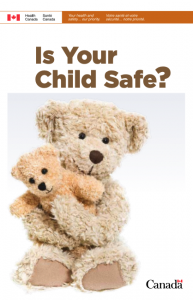National Poison Prevention Week is March 16 to 22 in 2025, with a focus on encouraging people in Canada to #CheckForPoisons and prevent poisoning before it happens.

Poison Prevention Week is an annual campaign to raise public awareness of poisoning injuries in Canada, encouraging community involvement as part of the solution.
In 2025, Parachute is joining organizations across Canada to promote a pan-Canadian theme for Poison Prevention Week – Awareness saves lives. Prevent poisoning before it happens. Use the hashtag #CheckForPoisons to promote the theme on social media.
Each year, more than 4,000 Canadians lose their lives due to poisoning and annual unintentional poisoning deaths have now surpassed transport-related deaths in Canada. With many potential poisons – such as medications, household cleaners and cannabis products – in and around the home, it’s important to know how to safely store these items and what to do in the event of a poisoning.
Recognize and identify potential poisons
There are many items in and around the home that can cause poisoning.
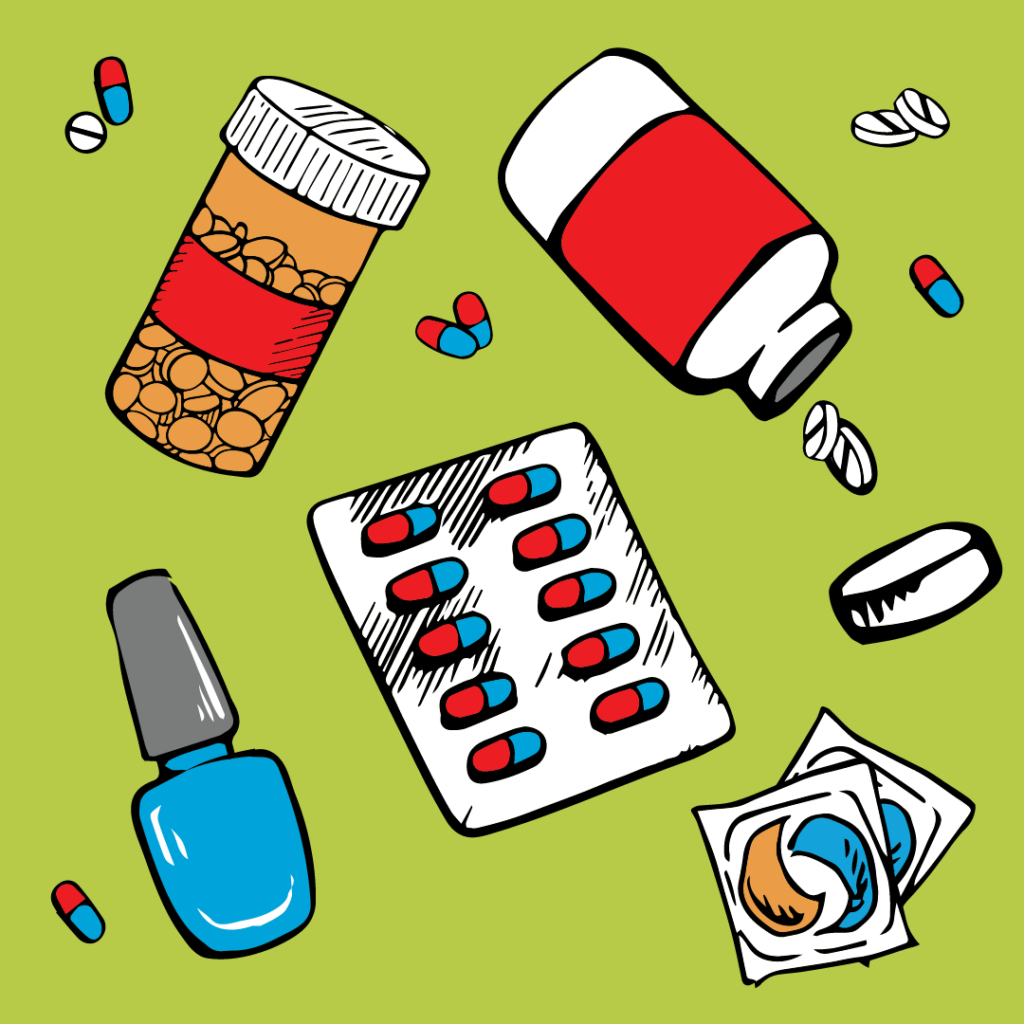
- Medications are the leading cause of poisoning in Canada. Prescription and over-the-counter medications as well as natural health products can cause poisoning if taken by mistake or used incorrectly. Medications that relieve pain, known as analgesics, are the No. 1 substance Canada’s poison centres receive calls about.
- Household cleaners can be fragrant, brightly coloured and appealing to children. As well, when mixed, household cleaners can produce dangerous chemicals.
- Ingesting cannabis is the most common cause of cannabis poisoning in children. Cannabis edibles can have a stronger effect on the body than other forms of cannabis. Cannabis edibles often resemble common snacks (e.g., brownies, gummy candies). A young child may be unable to tell the difference. Children can have significant effects from cannabis edibles such as drowsiness, coma, agitation and difficulty breathing.
- Colourful, transparent laundry detergent pods may look like candies or toys to children. Laundry detergent pods can harm a child if ingested, or if the liquid gets into their eyes. Older adults with dementia can also be at risk of unintentionally consuming laundry detergent pods.
- Fragrant and brightly coloured personal care products such as perfume, mouthwash and hand sanitizer can be appealing to children. These products often contain a high percentage of alcohol that can be harmful to children if ingested. Store these products high and locked away from children’s reach.
- Some indoor plants can be toxic if ingested. Leave the name tag on each plant in the home so that you can identify it should you need to call a poison centre.
- Do not assume that a plant is safe to eat because birds or wildlife eat it. Teach children to never put berries, seeds, flowers, nuts or leaves in their mouth without checking with an adult first.
- Never eat wild mushrooms. Poisonous mushrooms can look just like mushrooms that are safe to eat. Check outdoor areas frequently for mushrooms before children go outdoors to play and remove all mushrooms growing outdoors near your home.
Take action to prevent poisoning
Know how to store potential poisons safely and prevent poisoning:
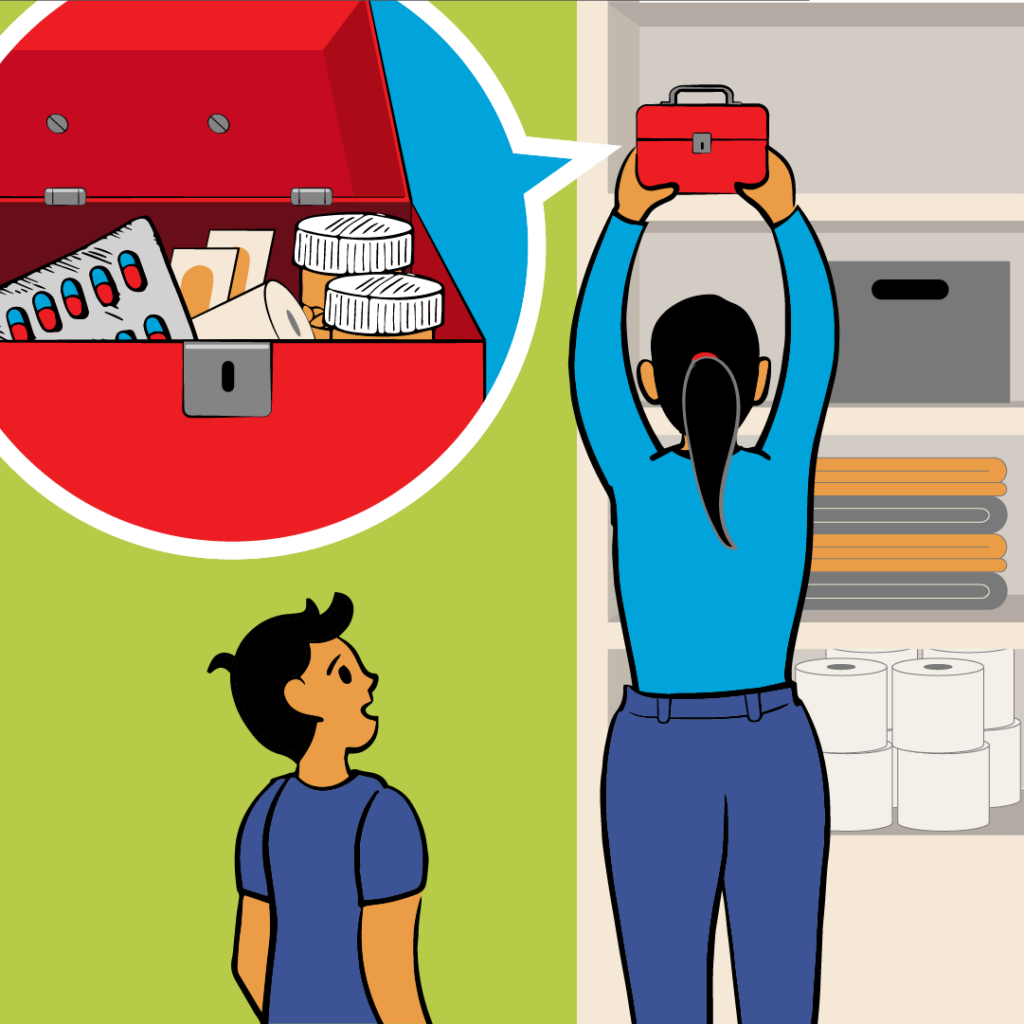
- Store poisonous products high, locked and out of sight.
- Keep products in their original, child-resistant packaging. Child-resistant packaging has been shown to reduce poisoning injuries and deaths.
- Put medications, cannabis and other products away after every use. Even products in child-resistant packaging should be stored away safely after use. Young children investigate their world by putting things in their mouths and may be able to open the container given enough time.
- Keep medications, cleaners and other products in their original, labelled packaging to ensure you have instructions for use, avoid mix-ups and have information about the contents should you need to call a poison centre.
Follow directions and use products as they’re meant to be used:
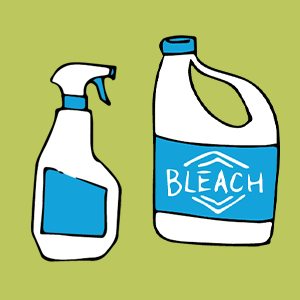
- Always read the label and check the dosage each time you give or take medicine, including over-the-counter and prescription medications.
- Avoid mixing different cleaning products together. Mixing can cause chemical reactions that produce dangerous gases.
- Avoid using cannabis products and e-cigarettes in front of children. Children often want to do the same things their parents and caregivers do.
Talk to your pharmacist:
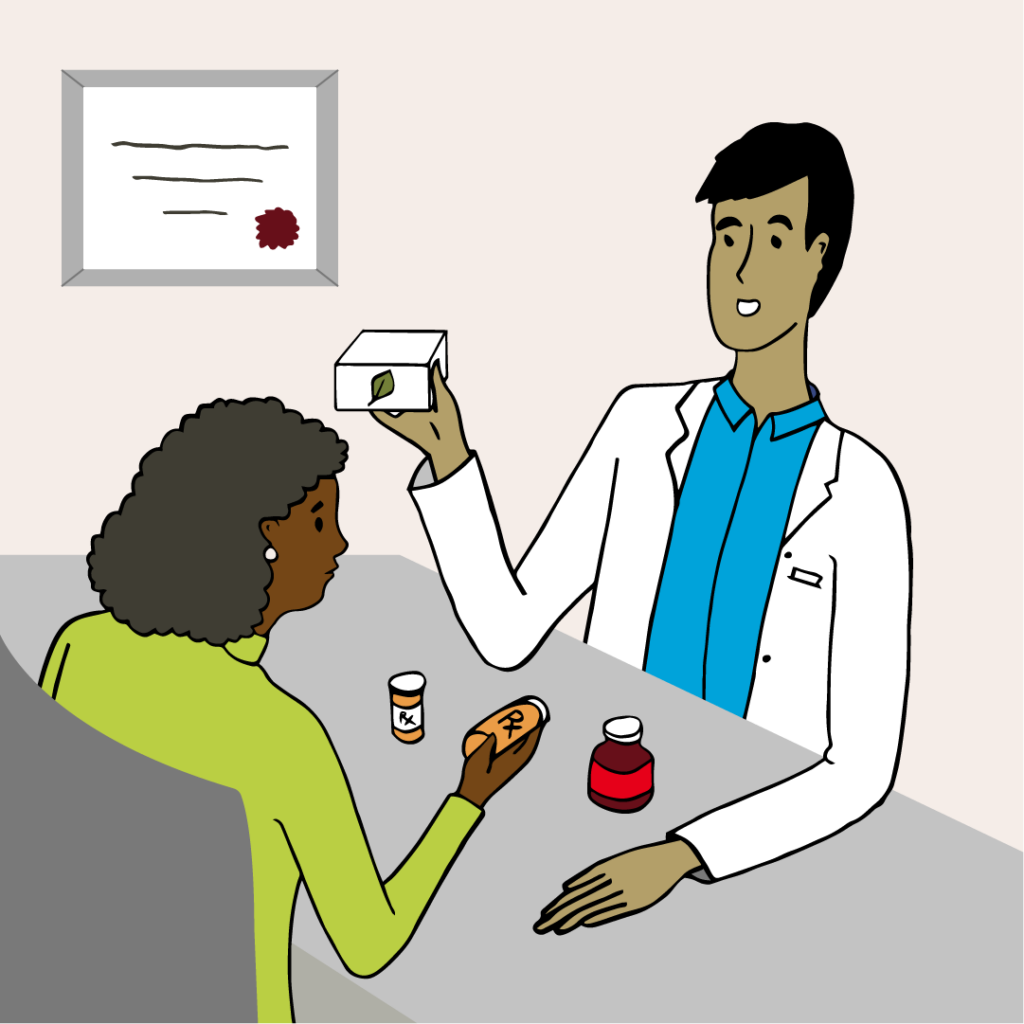
- Your pharmacist can help you learn how to use medications (both prescription and over-the-counter) and natural health products safely.
- Inform your pharmacist about any medical conditions you have or have had as well as all medications (including vitamins and supplements) you are taking and exactly how you take them.
- Tell your pharmacist about any changes to your medications as well as anything that could impact your use of the medication, such as issues distinguishing between medications or taking the correct dosage.
Safely dispose of expired and unused products and batteries:
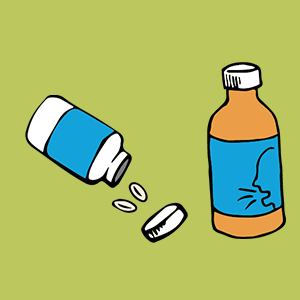
- Having expired and unused products around the home can lead to their potential misuse and abuse.
- Return expired and unused prescription and over-the-counter medications and natural health products to your pharmacy or through your local unwanted medications take-back program.
- Store button batteries and other battery types up high and locked, out of reach and sight of children at all times. This applies when you are disposing of batteries as well, as even “dead” batteries are dangerous. Learn more about the risks of button batteries.
- Dispose of used batteries according to local municipal hazardous waste requirements. Do not put batteries in your household garbage.
Know what to do in case of a poisoning
Have an action plan in place to help you and your family respond quickly in the event of a poisoning. If you suspect a poisoning, call your local poison centre.
Poison centres operate 24 hours, seven days a week. When you call a poison centre, you will be connected with a registered nurse or pharmacist with specialized training in the effects of poison, known as toxicology. Poison centres provide advice over the phone for anyone of any age who may have been exposed to a poison.
Possible poisoning? Call your local poison centre.
Canada has a toll-free 24/7 number for poison centres. If you suspect a poisoning, call 1-844-POISON-X (1-844-764-7669).
If you are located in Nunavut, contact your local health centre. If you are located in Québec, call 1-800-463-5060.
Keep the number of your poison centre nearby or in your phone. Program the number into your phone’s contact list or keep it in a visible location, such as on your fridge.
If the person loses consciousness, has difficulty breathing or is having a seizure, call 911.
Support is available
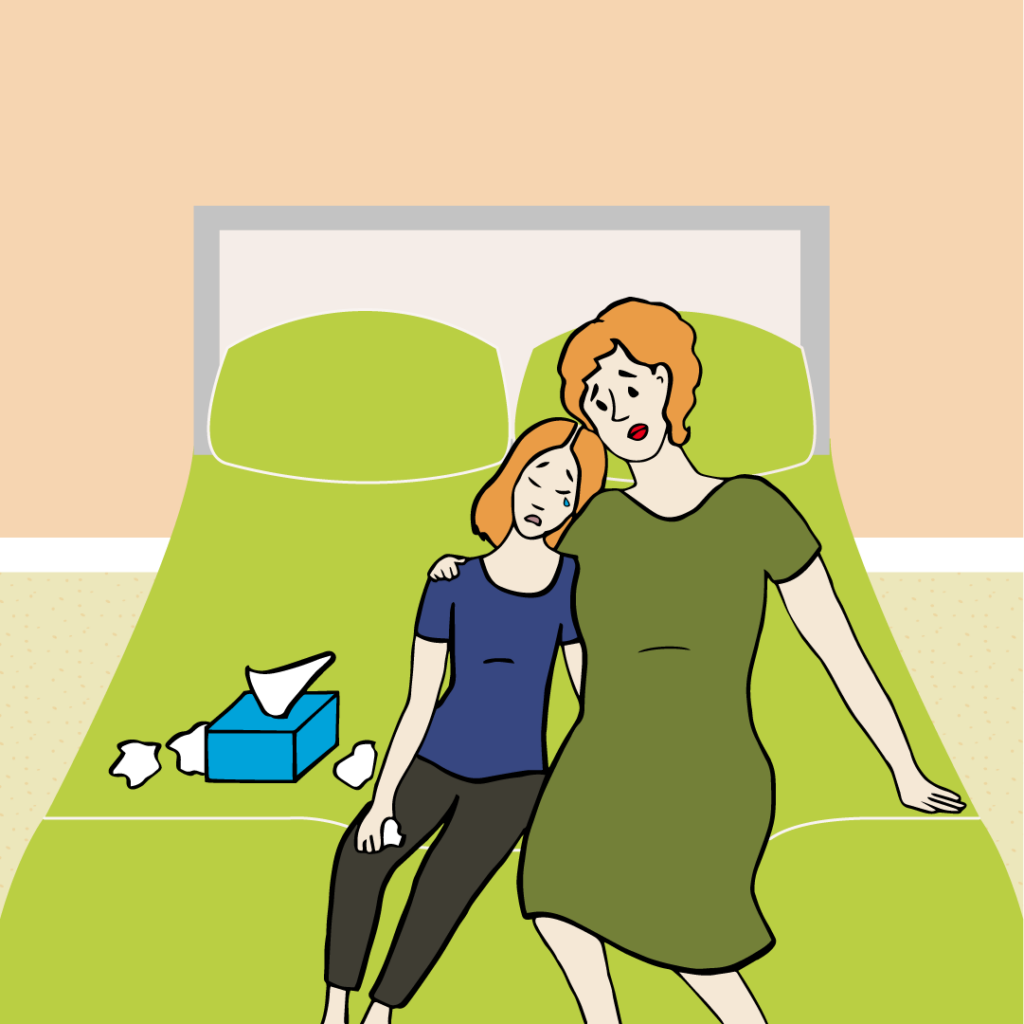
There are many resources available if you or someone you know is in crisis and in need of support. Call your local poison centre if you suspect self-harm by poisoning.
If you or someone you know:
- Requires urgent medical care, call 9-1-1.
- Is thinking about suicide, call or text 9-8-8. In Québec, call 1-866-APPELLE. Support is available 24 hours a day, seven days a week.
- Is looking for substance use support, find Canada-wide and regional support services.
Help create a safer Canada
Everyone can help by reporting unsafe products and issues with medications.
- Report your experience with or concerns about a product to Health Canada to help identify risks to people’s health and safety.
- Play a vital role in reducing medication incidents by reporting them. A medication incident, also known as a medication error, is a mistake with medication (e.g., receiving the wrong medication, dose, or route of administration).
- Health professionals are encouraged to report adverse reactions and concerns about products. Reporting is a critical part of the process to improve health product safety for all people in Canada.
